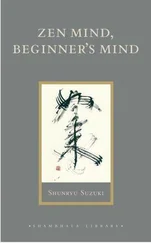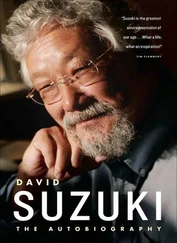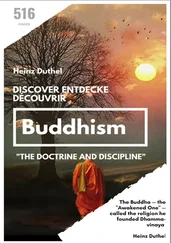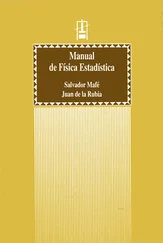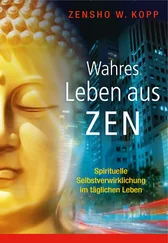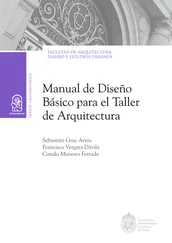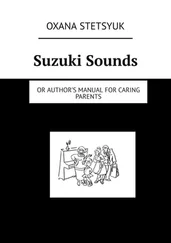Teitaro Suzuki - Manual of Zen Buddhism
Здесь есть возможность читать онлайн «Teitaro Suzuki - Manual of Zen Buddhism» весь текст электронной книги совершенно бесплатно (целиком полную версию без сокращений). В некоторых случаях можно слушать аудио, скачать через торрент в формате fb2 и присутствует краткое содержание. Жанр: Религиоведение, Религия, Руководства, на английском языке. Описание произведения, (предисловие) а так же отзывы посетителей доступны на портале библиотеки ЛибКат.
- Название:Manual of Zen Buddhism
- Автор:
- Жанр:
- Год:неизвестен
- ISBN:нет данных
- Рейтинг книги:3 / 5. Голосов: 1
-
Избранное:Добавить в избранное
- Отзывы:
-
Ваша оценка:
- 60
- 1
- 2
- 3
- 4
- 5
Manual of Zen Buddhism: краткое содержание, описание и аннотация
Предлагаем к чтению аннотацию, описание, краткое содержание или предисловие (зависит от того, что написал сам автор книги «Manual of Zen Buddhism»). Если вы не нашли необходимую информацию о книге — напишите в комментариях, мы постараемся отыскать её.
Manual of Zen Buddhism — читать онлайн бесплатно полную книгу (весь текст) целиком
Ниже представлен текст книги, разбитый по страницам. Система сохранения места последней прочитанной страницы, позволяет с удобством читать онлайн бесплатно книгу «Manual of Zen Buddhism», без необходимости каждый раз заново искать на чём Вы остановились. Поставьте закладку, и сможете в любой момент перейти на страницу, на которой закончили чтение.
Интервал:
Закладка:
2. This means: When the absolute oneness of things is not properly understood, negation as well as affirmation tends to be a one-sided view of reality. When Buddhists deny the reality of an objective world, they do not mean that they believe in the unconditioned emptiness of things; they know that there is something real which cannot be done away with. When they uphold the doctrine of emptiness this does not mean that all is nothing but an empty hollow, which leads to a self-contradiction. The philosophy of Zen avoids the error of one-sidedness involved in realism as well as in nihilism.
3. The Mind = the Way = the One = Emptiness.
4. The Masters and Disciples of the Lanka also quotes a poetical composition of So-san on “The Mysterious” in which we find the following echoing the idea given expression here:
“One Reality only—
How deep and far-reaching!
The ten thousand things—
How confusingly multifarious!
The true and the conventional are indeed intermingling,
But essentially of the same substance they are.
The wise and the unenlightened are indeed distinguishable,
But in the Way they are united as one.
Desirest thou to find its limits?
How broadly expanding! It is limitless!
How vaguely it vanishes away! Its ends are never reached!
It originates in beginningless time, it terminates in endless time.”
5. I.e. Tat tvam asi.
1. The Tun-huang copy, edited by D. T. Suzuki, 1934. Hui-neng = Yeno, 637–712.
2. The text has “the Prajnaparamita Sutra” here. But I take it to mean Prajna itself instead of the sutra.
3. The text has the “body”, while the Koshoji edition and the current one have “mind”.
4. The title literally reads: “the true-false moving-quiet”. “True” stands against “false” and “moving” against “quiet” and as long as there is an opposition of any kind, no true spiritual insight is possible. And this insight does not grow from a quietistic exercise of meditation.
5. That is, the Absolute refuses to divide itself into two: that which sees and that which is seen.
6. “Moving” means “dividing” or “limiting”. When the absolute moves, a dualistic interpretation of it takes place, which is consciousness.
7. Chih , jnana in Sanskrit, is used in contradistinction to Prajna which is the highest form of knowledge, directly seeing into the Immovable or the Absolute.
1. Yoka Daishi (died 713, Yung-chia Ta-shih, in Chinese), otherwise known as Gengaku (Hsuan-chiao), was one of the chief disciples of Hui-neng, the sixth patriarch of Zen Buddhism. Before he was converted to Zen he was a student of the T'ien-tai. His interview with Hui-neng is recorded in the Tan-ching. He died in 713 leaving a number of short works on Zen philosophy, and of them the present composition in verse is the most popular one. The Original title reads: Cheng-tao Ke , “realization-way-song”.
2. The fivefold eye-sight ( cakshus ): (1) Physical, (2) Heavenly, (3) Prajna-, (4) Dharma-, and (5) Buddha-eye.
3. The fivefold power ( bala ): (1) Faith, (2) Energy, (3) Memory, (4) Meditation, and (5) Prajna.
4. (1) The Dharma-body, (2) the Body of Enjoyment, and (3) the Body of Transformation.
5. (1) Mirror-intuition, (2) intuition of identity, (3) knowledge of doing Works, and (4) clear perception of relations.
6. The Abhidharmakosa , VIII, gives an explanation of the eight Vimoksha. See La Vallee Poussin's French translation, Chap. VIII, pp. 203–221.
7. For the six Riddhi, which are the supernatural products of the meditations, see op. cit., VII, 122 ff.
8. T'sao-ch'i is the name of the locality where Hui-neng had his monastery, means the master himself.
9. According to Buddhist philosophy, existence is divided into two groups, samskrita and asamskrita . The samskrita applies to anything that does any kind of work in any possible manner, while the asamskrita accomplishes nothing. Of this class are space regarded as a mode of reality, Nirvana, and nonexistence owing to lack of necessary conditions.
10. Shang-hsing, lit. “good star”, was a great scholar of his age.
11. The story of this Bhikshu is told in the Sutra on Cleansing the Karma-hindrances ( Ching Yeh-chang Ching ).
1. The following mondo are all taken from a book known as Sayings of the Ancient Worthies, fas. I ( Ku tsun-hsiu yu-lu ).
2. The following mondo are all taken from a book known as Sayings of the Ancient Worthies, fas. I ( Ku tsun-hsiu yu-lu ).
1. Wobaku Ki-un in Japanese, died 850.
2. One of the first lessons in the understanding of Buddhism is to know what is meant by the Buddha and by sentient beings. This distinction goes on throughout all branches of the Buddhist teaching. The Buddha is an enlightened one who has seen into the reason of existence, while sentient beings are ignorant multitudes confused in mind and full of defilements. The object of Buddhism is to have all sentient beings attain enlightenment like the Buddha. The question is whether they are of the same nature as the latter; for if not they can never be enlightened as he is. The spiritual cleavage between the two being seemingly too wide for passage, it is often doubted whether there is anything in sentient beings that will transform them into Buddhahood. The position of Zen Buddhism is that One Mind pervades all and therefore there is no distinction to be made between the Buddha and sentient beings and that as far as Mind is concerned the two are of one nature. What then is this Mind? Huang-po attempts to solve this question for his disciple Pai-hsiu in these sermons.
3. Yuan in Chinese and pratyaya in Sanskrit. One of the most significant technical terms in the philosophy of Buddhism.
4. Wu-hsin , or mu-shin in Japanese. The term literally means “no-mind” or “no-thought”. It is very difficult to find an English word corresponding to it. “Unconsciousness” approaches it, but the connotation is too psychological. Mu-shin is decidedly an Oriental idea. “To be free from mind-attachment” is somewhat circumlocutionary, but the idea is briefly to denote that state of consciousness in which there is no hankering, conscious or unconscious, after an ego-substance, or a soul-entity, or a mind as forming the structural unit of our mental life. Buddhism considers this hankering the source of all evils moral and intellectual. It is the disturbing agency not only of an individual life but of social life at large. A special article in one of my Zen Essays will be devoted to the subject.
5. The five eyes are: (1) the physical eye, (2) the heavenly eye, (3) the eye of wisdom, (4) the eye of the Dharma, and (5) the eye of the Buddha.
6. In the Diamond Sutra ( Vajracchedika ), the Buddha makes five statements as regards the truth of his teaching.
1. Hsuan-sha, 835–908. The following is a literal translation of Case LXXXVIII of the Pi-yen Chi , which is one of the most important and at the same time the most popular of Zen texts. The words in brackets in the “Illustrative Case” and in Seccho's verse are those of Yengo. As to the nature and composition of the Pi-yen Chi, see my Zen Essays, Series II, p. 237 et seq.
2. The Remark purposes to make the reader abandon his usual relative point of view so that he can reach the absolute ground of all things.
1. It will be interesting to note what a mystic philosopher has to say about this: “A man shall become truly poor and as free from his creature will as he was when he was born. And I say to you, by the eternal truth, that as long as ye desire to fulfil the will of God, and have any desire after eternity and God; so long are ye not truly poor. He alone hath true spiritual poverty who wills nothing, knows nothing, desires nothing. ”—(From Eckhart as quoted by Inge in Light, Life, and Love .)
Читать дальшеИнтервал:
Закладка:
Похожие книги на «Manual of Zen Buddhism»
Представляем Вашему вниманию похожие книги на «Manual of Zen Buddhism» списком для выбора. Мы отобрали схожую по названию и смыслу литературу в надежде предоставить читателям больше вариантов отыскать новые, интересные, ещё непрочитанные произведения.
Обсуждение, отзывы о книге «Manual of Zen Buddhism» и просто собственные мнения читателей. Оставьте ваши комментарии, напишите, что Вы думаете о произведении, его смысле или главных героях. Укажите что конкретно понравилось, а что нет, и почему Вы так считаете.

